Information Processing | Chapter 7 | 8th Maths - Packing | 8th Maths : Chapter 7 : Information Processing
Chapter: 8th Maths : Chapter 7 : Information Processing
Packing
Packing
When we are
packing something in a box or a suitcase or a cupboard, first we have to decide
how we are going to pack. How many items can be fitted into that fixed space? A
good example of this is, before you go to school, you try to pack everything you
need (like your books, notebooks, geometry box, sports equipment, food and water
bottle) into your school bag. At that time, you are very clear that your books should
not be damaged and you are able to carry everything yourself. Think! The same rules
apply to posting a package to a friend or family member or others.
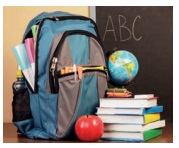
Apart from
these, the packaging methods are used in many cases such as cutting of sheets, glass,
paper, wood, cloth or other materials and room allotment, seating arrangement in
the particular space provided, parking vehicles with proper lanes and saving data
in hard disk, CD, pen drive and so on.
Using some
of the packing methods from the following situations and examples, let us try to
understand how best to fit the items into the space in the containers or in rooms
or in boxes etc.,
1. Packing
Approaches - Fractional method
Here, when we fill items in bags or in containers, we determine the weight, value and number of each item with the condition that the total weight of the container is less than or equal to a given limit and the total value is as large as possible. Fractional method uses the technique of buying things fractionally and admits buying of more items within a given budget. Let us learn more about this approach from the following situation.
Situation 1:
Suppose that
you want to buy some vegetables and fruits that are given in the Fig. 7.20 with
their weights and price and that you have a bag that capacity of carrying 15 kg. The objective is to buy more items within
your budget of ₹550 and also that weight should not exceed
15 kg.
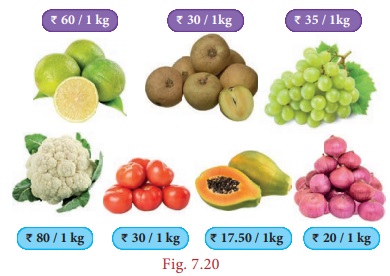
You cannot
buy all the items because if you calculate the total weight of all the items, then
it would be greater than 15 kg (maximum
capacity of your bag is 15 kg). So, let
us try some approaches, to find how you can select more items so that you will buy
them with maximum price within your budget of ₹550. For that let us tabulate the items
with their weights and price you want to buy.

Approach I - Selecting
items with Maximum Price
In this approach,
we select the items according to the maximum price. Here the maximum price in the
table is ₹150/-. Now, let us tabulate to find the total price and how much
can we buy vegetables and fruits within our budget and not exceeding 15kg.
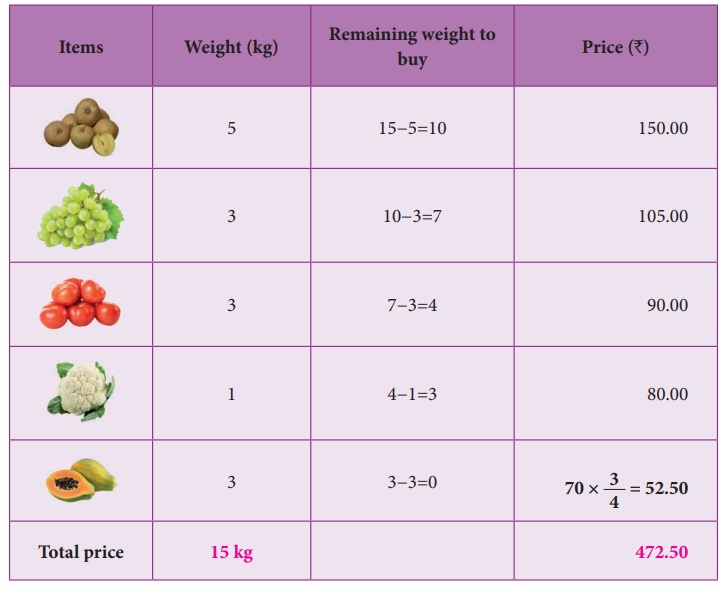
Here, 3 kg of papaya is enough as the total weight
reaches 15 kg. So, 3 kg of papaya costs ₹52.50.
Hence, in this approach we will spend maximum ₹472.50 to buy 15 kg of vegetables and
fruits.
Approach II - Selecting
items with Minimum Weight
In this approach,
we select the items according to the minimum weight. Here, we can select more and
more items. Now, let us tabulate to find the total price and how much can we buy
vegetables and fruits within our budget and not exceeding 15kg.
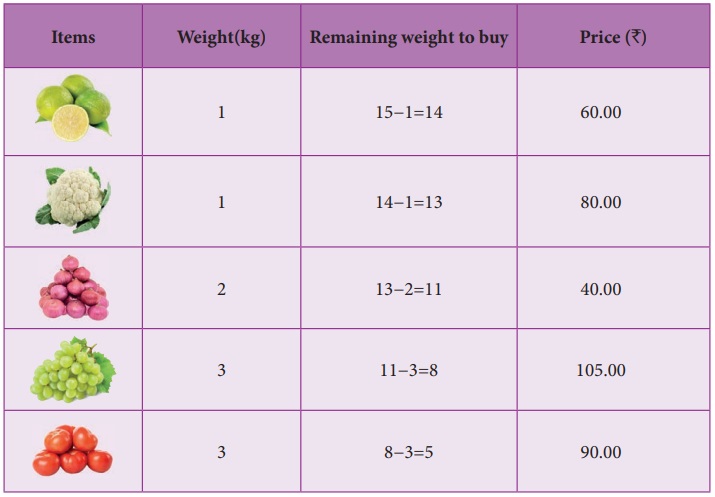
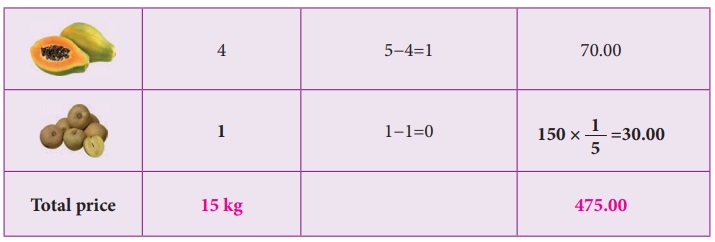
Here, 1 kg of Sapotta is enough to complete 15 kg with minimum price of ₹30
per kg.
Hence in
this approach, we will spend maximum ₹475 to buy 15 kg of vegetables and fruits.
Approach III - Finding
the Maximum price to Weight Ratio.
In this approach,
we select the items according to the maximum price to weight ratio (find the rate
of 1kg). Now, let us tabulate to find
the total price and how much we can buy vegetables and fruits within our budget
and not exceeding 15 kg.
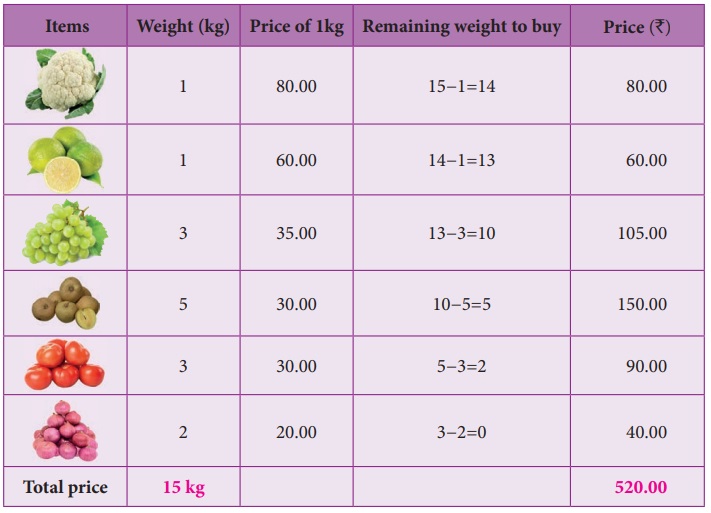
In this approach,
we can buy all vegetables and fruits except papaya as we need with maximum price
within our budget and not exceeding 15 kg.
Comparatively, in the II approach we can buy more items but spend minimum amount
only. So, we can say third approach is best one. Isn’t it?
Related Topics